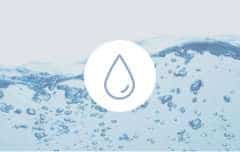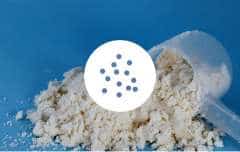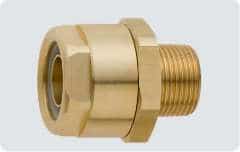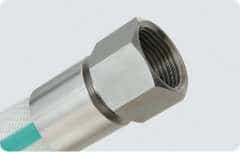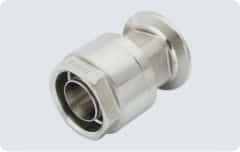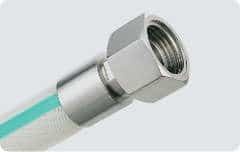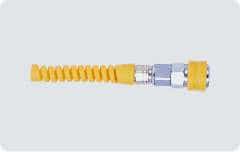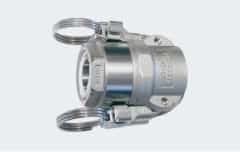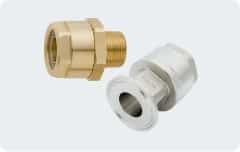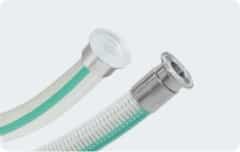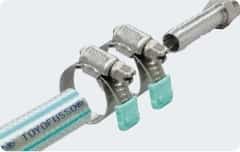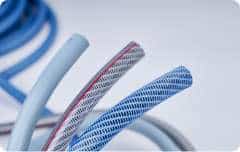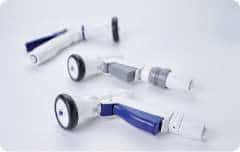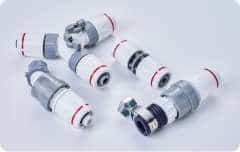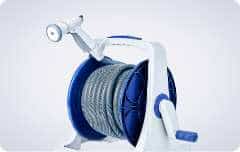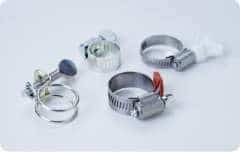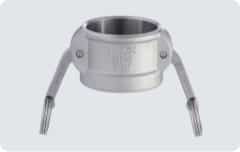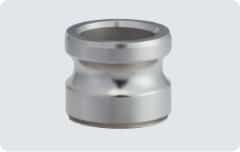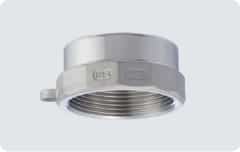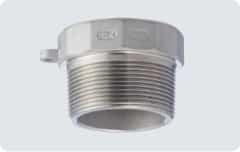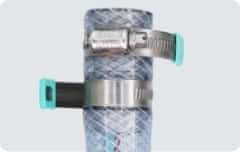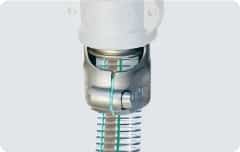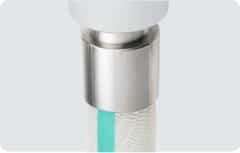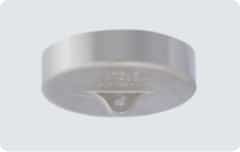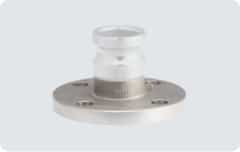FAQ
FAQ


FAQ
hose
View all- Q1 Do the hoses have specific service life? I want to manage the hose replacement schedule. Function and performance
-
A.
No service life is set for our hoses. Since many usage conditions such as fluid type, operating temperature, operating pressure, hose size and length are involved and the hoses are used in a wide variety of environments, it is not possible to set a specific service life.
Make arrangements based on the actual piping conditions at your company.
- Q2 The PVC hose currently used is not heat resistant and the hose often needs to be replaced. Are there hoses that last for a long time when using hot water of about 80℃? Function and performance
-
A.
If a normal PVC resin hose is used with food, hot water and cleaning agents at 60℃ or higher, the hose will harden, which may lead to problems such as leakage and disconnection of the hose coupling. Depending on the pressure of food, hot water, etc., we offer hoses according to applications and usage conditions such as those that can be used up to 70℃ and 150℃. Select a hose that meets the operating conditions.
- Q3 Do you offer any couplings for TOYORON Hoses with inner diameters of 22ø and 45ø? Specification
-
A.
Originally, TOYORON Hoses with inner diameters of 22ø and 45ø and SUPER TOYORON Hoses with inner diameters of 22ø and 48ø were made into standardized sizes based on the assumption that they would be directly inserted into 15A and 40A hard pipes (steel pipes, PVC pipes). Therefore, there are no compatible threaded hose nipples available on the market. Furthermore, TOYOCONNECTOR is a dedicated coupling for Toyox hoses, but there are no products available compatible with its size.
- Q4 Can sodium hydroxide (caustic soda) be run through the TOYOSILICONE Hose? Fluid
-
A.
Solutions of sodium hydroxide (caustic soda) should generally not be run through the TOYOSILICONE Hose as it can cause degradation of the hose. For CIP (cleaning in place), however, a dilution of 2 to 3% may be used without problems. The TOYOSILICONE has even been used by a CIP equipment manufacturer. Even so, this will result in quicker degradation than using water or air.
- Q5 Is the hose softer as the minimum bending radius is smaller? Specification
-
A.
Smaller minimum bending radius doesn’t necessarily mean it is softer. Although it is a measure of softness, it is not absolute. For example, the bend radius is TOYOSPRING < TOYORON, but in this case TOYORON feels softer. The softness varies depending on the thickness, material and reinforcement structure. Select an appropriate hose with reference to the deflection data and product samples.
coupling
View all- Q1 I would like to know the subsequent product to the W-SAFETY Nipple Set (WFSN). Model lineup
-
A.
The W-SAFETY Nipple Set (WFSN) will be discontinued. The subsequent product will be TOYOCONNECTOR couplings (dedicated to TOYOX Hose) that can securely connect the hose.
- Q2 What order form and units are used for TOYOSILICONE Hose crimped products? Other
-
A.
These are made-to-order products with delivery dates. Specify the coupling type, hose diameter, length and quantity when placing an order.
- Q3 Are there different-diameter types of TOYOCONNECTOR for reduced size? Model lineup
-
A.
There are no different-diameter couplings for TOYOCONNECTOR. There should be a method of adjusting and installing using general different-diameter bushings or the like in the thread part.
Click here for a list of brass coupling sizes and compatible hoses
Click here for a list of stainless steel coupling sizes and compatible hoses
- Q4 Are Toyox ferrule couplings ISO-compliant? Specification
-
A.
Yes. All are ISO2852 ferrule groove compatible parts. When connecting, use a packing for ISO ferrule couplings.
- Q5 What is the difference between the male coupling and pipe thread coupling on the caulking bracket? Specification
-
A.
Male coupling is for sanitary use. It is not compatible with pipe thread.
kamlok
View all- Q1 I would like to know the guideline for replacing the KAMLOK. Specification
-
A.
If the cam arm of the KAMLOK COUPLER feels loose or the liquid oozes, it is an indication to replace the gasket. If the cam arm feels loose even after replacing the gasket, it is due to wear, so replace it with a new KAMLOK adapter.
- Q2 Is the flange in the KAMLOK with Flange set compliant with JIS 10K? Connection
-
A.
Models such as the KAMLOK 633LAS and 633LBS have a flange that is compliant with JIS 10K.
- Q3 What is the difference between the KAMLOK 633-C and 633-CT, 633-E and 633-ET? Specification
-
A.
The difference between the KAMLOK 633-C and 633-CT is the difference in the outer diameter of the shank where the hose is inserted. The 633-CT is narrower than the 633-C and is used to be inserted into hoses that do not easily expand, such as suction hoses in general. If the size does not match, fluid leakage or coupling disconnection may occur. The same applies to the 633-E and 633-ET. Use the 633-E or 633-C for our hoses.
- Q4 Can cam arms be replaced? Model lineup
-
A.
You can purchase a set containing a cam arm, pin and ring. Please let us know the material and size of your cam arm when ordering this.
- Q5 Can a 1/2″ coupler be connected to a 3/4″ adapter? Connection
-
A.
Yes, it can. The fitting areas of the 1/2″ coupler and 3/4″ adapter are the same size. Likewise, a 3/4″ coupler can be connected to a 1/2″ adapter.
hose clamp
View all- Q1 Are the TOYOX hose bands compatible with RoHS2? Laws and regulations
-
A.
All hose bands are RoHS2 compatible. Certificates are available if necessary. Necessary survey reports can be downloaded by registering as a member. Feel free to use them as needed.
- Q2 Do you separately sell safety caps for safety bands? Can it be attached to the band edge of other companies’ hose bands? Part
-
A.
Safety caps for safety bands are not sold separately. In addition, you cannot attach a safety cap to the tip of another manufacturer’s hose band. In addition, do not use the product once the safety cap has been removed.
- Q3 What is the maximum tightening torque in the safety band specification table? Is there data on the optimal torque when tightening the hose? Specification
-
A.
The maximum tightening torque in the band specification table is guaranteed by the manufacturer. Exceeding it may cause damage or the band tightening function to deteriorate. There is no proper torque value. There are many hose hardnesses, wall thicknesses and coupling types. Setting up is difficult as it depends on which part of the barb to be attached. To solve such issues, we offer special couplings for tightening cap nuts called TOYOCONNECTOR that do not require torque management.
- Q4 When attaching a hose to a nipple with a clamp, where should the clamp be placed? How to use
-
A.
To securely connect the parts, fasten the clamp in the middle of the peak of the barb, above the depression. Do not fasten it immediately below the hexagonal area of the nipple. We recommend using two clamps if the hose size is greater than 1″ (25mm).


